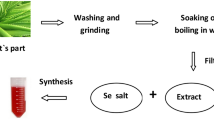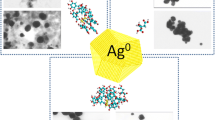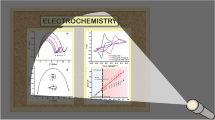Abstract
In this theoretical study we used density functional theory to calculate the molecular and crystalline structures of sodium selenite. Our structural results were compared with experimental data. From the molecular structure we determined the ionization potential, electronic affinity, and global reactivity parameters like electronegativity, hardness, softness and global electrophilic index. A significant difference in the IP and EA values was observed, and this difference was dependent on the calculation method used (employing either vertical or adiabatic energies). Thus, values obtained for the electrophilic index (2.186 eV from vertical energies and 2.188 eV from adiabatic energies) were not significantly different. Selectivity was calculated using the Fukui functions. Since the Mulliken charge study predicted a negative value, it is recommended that AIM should be used in selectivity characterization. It was evident from the selectivity index that sodium atoms are the most sensitive sites to nucleophilic attack. The results obtained in this work provide data that will aid the characterization of compounds used in crop biofortification.



Similar content being viewed by others
References
Ximénez-Embún P, Alonso I, Madrid-Albarrán Y, Cámara C (2004) Establishment of selenium uptake and species distribution in lupine, Indian mustard, and sunflower plants. J Agric Food Chem 52(4):832–838
Zhu Y-G, Pilon-Smits EAH, Zhao F-J, Williams PN, Megharg AA (2009) Selenium in higher plants: understanding mechanisms for biofortification and phytoremediation. Trends Plant Science 14:436–442. doi:10.1016/j.tplants.2009.06.006
Rayman MP (2002) The argument for increasing selenium intake. Proc Nutr Soc 61:203–215
Diwadkar-Navsariwala V, Prins GS, Swanson SM, Birch LA, Ray VH, Hedayat S, Lantvit DL, Diamond AM (2006) Selenoprotein deficiency accelerates prostate carcinogenesis in a transgenic model. Proc Natl Acad Sci USA 103:8179–8184
Smkolji P, Pograje L, Hlaston-Ribic C, Stibilj V (2005) Selenium content in selected Slovenian foodstuffs and estimated daily intakes of selenium. Food Chem 90:691–697. doi:10.1016/j.foodchem.2004.04.028
Pedrero Z, Madrid Y, Cámara C (2006) Selenium species bioaccessibility in enriched radish (Raphanus sativus): a potential dietary source of selenium. J Agric Food Chem 54:2412–2417
Chen L, Yang F, Xu J, Yun H, Hu Q, Zhang Y, Pan G (2002) Determination of selenium concentration of rice in China and effect of fertilization of selenite and selenate on Se content of rice. J Agric Food Chem 50:5128–5130
Lyons GH, Stangoulis JCR, Gram RD (2004) Exploiting micronutrient interaction to optimize biofortification programs: the case for inclusion of selenium and iodine in the Harvest Plust programs. Nutr Rev 62:247–252
Abdo KM (1994) Toxicity Report Series Number 38. National Toxicology Program, Bethesda
Pehrson B, Ortman K, Madjid N, Trafikowska U (1999) The influence of dietary selenium as selenium yeast or sodium selenite on the concentration of selenium in the milk of Suckler cows and on the selenium status of their calves. J Anim Sci 77:3371–3376
Romero-Pérez A, García-García E, Zavaleta-Mancera A, Ramírez-Bribiesca JE, Revilla-Vázquez A, Hernández-Calva LM, López-Arellano R, Cruz-Monterrosa RG (2010) Designing and evaluation of sodium selenite nanoparticles in vitro to improve selenium absorption in ruminants. Vet Res Commun 34:71–79. doi:10.1007/s11259-009-9335-z
Li X, Liu Y, Deng F, Wang C, Qu S (2000) Microcalorimetric study of the toxic effect of sodium selenite on the mitochondria metabolism of Carassius auratus liver. Biol Trace Elem Res 77:261–271
Ting-Ming C, Fang-Yuan H, Cai-Min X, Bing-She H, Hua D, Lu Z, Xuan W, Yang Y, Hua-Zhen P, Zhi-Nan Z (2006) Distinct effects of different concentrations of sodium selenite on apoptosis, cell cycle, and gene expression profile in acute promyeloytic leukemia-derived NB4 cells. Ann Hematol 85:434–442. doi:10.1007/s00277-005-0046-4
Sharma S, Bansal A, Dhillon SK, Karaj S (2009) Comparative effects of selenate and selenite on growth and biochemical composition of rapeseed (Brassica napus L.) Dhillon. Plant Soil. doi:10.1007/s11104-009-0162-3
Sanuki S, Kojima T, Arai M, Nagaoka S, Majima H (1999) Photocatalytic reduction of selenate and selenite solutions using TiO2. Metall Mater Trans B 30B:15–20. doi:10.1007/s11663-999-0002-0
Xiong G, Sullivan VS, Stair PC, Zajac GW, Trail SS, Kaduk JA, Golabb JT, Brazdil JF (2004) Effect of titanium substitution on the structure of VSbO4 catalysts for propane ammoxidation. J Catal 230:317–326. doi:10.1016/j.jcat.11.046
Ding YC, Xiang AP, Xu M, Zhu WJ (2008) Electronic structures and optical properties of ٧-Si3N4 doped with La. Physica B 403:2200–2206. doi:10.1016/j.physb.2007.11.025
Zhou X, Liu T, Zhang Q, Cheng F, Qiao H (2009) First-principles study of cadmium vacancy in CdWO4 crystal. Solid State Sci 11:2071–2074. doi:10.1016/j.solidstatesciences.2009.09.006
Louail L, Haddadi K, Maouche D, Ali Sahraoui F, Hachemi A (2008) Electronic band structure of calcium selenide under pressure. Physica B 403:3022–3026
Gua W, Wang SY, Xu M, Chen YR, Chen LY, Jia Y (2009) Studies of the electronic and optical properties of BaMxO1_x (M = S, Se, Te) using first-principle calculations. Opt Commun 282:48–52. doi:10.1016/j.optcom.2008.09.077
Zhang H, Liu T, Zhang Q, Wang X, Guo X, Song M, Yin J (2009) First-principles study on electronic structures and color centers in BaWO4 crystal with barium vacancy. Physica B 404:1538–1543. doi:10.1016/j.physb.2009.01.011
Verma VP (1999) A review of synthetic thermoanalytical, IR, Raman and X-ray studies on metal selenites. Thermochim Acta 327:63–102
Vlaev L, Tavlieva M, Barthel J (2007) Temperature and concentration dependences of the electrical conductance, diffuson and kinetic parameters of sodium selenite solutions in ordinary and heavy water. J Sol Chem 36:447–465. doi:10.1007/s10953-007-9125-6
Pronina NA, Kovshova YI, Popova VV, Lapin AB, Alekseeva SG, Baum RF, Mishina IM, Tsoglin LN (2002) The effect of selenite ions on growth and selenium accumulation in Spirulina platensis. Russ J Plant Physiol 49:235–241. doi:10.1023/A:1014809825140
Wang Y (2009) Differential effects of sodium selenite and nano-Se on growth performance, tissue Se distribution, and glutathione peroxidase activity of avian broiler. Biol Trace Elem Res 128:184–190. doi:10.1007/s12011-008-8264-y
Wickleder MS (2002) Sodium selenite, Na2SeO3. Acta Cryst E58:i103–i104
Altmann JA, Handy NC (1999) Evaluation of the performance of the HCTH exchange-correlation functional using a benchmark of sulfur compounds. Phys Chem Chem Phys 1:5529–5536
Hohenberg P, Kohn W (1964) Inhomogeneous electron gas. Phys Rev B 163:864–871. doi:10.1103/PhysRev.136.B864
Kohn W, Sham LJ (1965) Self-consistent equations including exchange and correlation effects. Phys Rev A 140:1133–A1138. doi:10.1103/PhysRev.140.A1133
Segall MD, Lindan PJD, Probert MJ, Pickard CJ, Hasnip PJ, Clark SJ, Payne MC (2002) First-principles simulation: ideas, illustrations and the CASTEP code. J Phys Condens Matter 14:2717–2744. doi:10.1088/0953-8984/14/11/301
Broyden CG (1970) The convergence of a class of double-rank minimization algorithms. 2: The new algorithms. J Inst Math Appl 6:222–231. doi:10.1093/imamat/6.3.222
Fletcher R (1970) A new approach to variable metric algorithms. Comput J 13:317–322. doi:10.1093/comjnl/13.3.317
Goldfarb D (1970) A family of variable-metric algorithms derived by variational means. Math Comput 24:23–26
Shanno DF (1970) Conditioning of quasi-Newton methods for function minimization. Math Comput 24:647–656
Perdew JP, Wang Y (1992) Accurate and simple analytic representation of the electron-gas correlation energy. Phys Rev B 45:13244–13249. doi:10.1103/PhysRevB.45.13244
Accelrys Software Inc. (2008) Materials Studio modeling, CASTEP code, release 4.4. Accelrys Software Inc., San Diego
Vanderbilt D (1990) Soft self-consistent pseudopotentials in generalized eigenvalue formalism. Phys Rev B 41:7892–7895. doi:10.1103/PhysRevB.41.7892
Accelrys Software Inc. (2008) Materials Studio release notes, release 4.4. Accelrys Software Inc., San Diego
Frisch MJ, Trucks GW, Schlegel HB, Scuseria GE, Robb MA, Cheeseman JR, Montgomery JA Jr, Vreven T, Kudin KN, Burant JC, Millam JM, Iyengar SS, Tomasi J, Barone V, Mennucci B, Cossi M, Scalmani G, Rega N, Petersson GA, Nakatsuji H, Hada M, Ehara M, Toyota K, Fukuda R, Hasegawa J, Ishida M, Nakajima T, Honda Y, Kitao O, Nakai H, Klene M, Li X, Knox JE, Hratchian HP, Cross JB, Bakken V, Adamo C, Jaramillo J, Gomperts R, Stratmann RE, Yazyev O, Austin AJ, Cammi R, Pomelli C, Ochterski JW, Ayala PY, Morokuma K, Voth GA, Salvador P, Dannenberg JJ, Zakrzewski VG, Dapprich S, Daniels AD, Strain MC, Farkas O, Malick DK, Rabuck AD, Raghavachari K, Foresman JB, Ortiz JV, Cui Q, Baboul AG, Clifford S, Cioslowski J, Stefanov BB, Liu G, Liashenko A, Piskorz P, Komaromi I, Martin RL, Fox DJ, Keith T, Al-Laham MA, Peng CY, Nanayakkara A, Challacombe M, Gill PMW, Johnson B, Chen W, Wong MW, Gonzalez C, Pople JA (2004) Gaussian 03, revision C.02. Gaussian Inc., Wallingford
Hamprecht FA, Cohem AJ, Tozer DJ, Handy NC (1998) Development and assessment of new exchange-correlation functional. J Chem Phys 109:6264. doi:10.1063/1.477267
Boese AD, Handy NC (2000) New generalized gradient approximation functional. J Chem Phys 112:1670–1678. doi:10.1063/1.480732
Boese AD, Martin JML (2004) Development of novel density functionals for thermochemical kinetics. J Chem Phys 121:3405–3416. doi:10.1063/1.1774975
Godbout N, Salahub DR, Andzelm J, Wimmer E (1992) Optimization of Gaussian-type basis sets for local spin density functional calculations. Part I. Boron through neon, optimization technique and validation. Can J Chem 70:560–571. doi:10.1139/v92-079
Coquet R, Mizuki T, Iwasawa Y (2007) Energy-gaining formation and catalytic behavior of active structures in a SiO2-supported unsaturated Ru complex catalyst for alkene epoxidation by DFT calculations. Phys Chem Chem Phys 9:6040–6046. doi:10.1039/b710714e
Parr RG, Yang W (1984) Density functional approach to the frontier-electron theory of chemical reactivity. J Am Chem Soc 106:4049–4050. doi:10.1021/ja00326a036
Mulliken RS (1955) Electronic population analysis on LCAO-MO molecular wave functions. J Chem Phys 23:1833–1840. doi:10.1063/1.1740588
Mulliken RS (1962) Criteria for the construction of good self-consistent field molecular orbital wavefunctions and the significance of LCAO-MO population analysis. J Chem Phys 36:3428–3439
Bader RFW (1990) Atoms in molecules. A quantum theory. Oxford University Press, Oxford
Parr RG, Donnelly RA, Levy M, Palke WE (1978) Electronegativity: the density functional viewpoint. J Chem Phys 68:3801–3807. doi:10.1063/1.436185
Toro-Labbé A (1999) Characterization of chemical reactions from the profiles of energy, chemical potential and hardness. J Phys Chem A 103:4398–4403. doi:10.1021/jp984187g
Acknowledgments
D.B.J. and E.S. are researchers from CONACYT and CIAD, D.G.M. is a researcher from CONACYT and CIMAV, DH.G. is a researcher from CNyN at Universidad Nacional Autónoma de México (UNAM). A.F.H. is grateful for the doctoral scholarship granted by the Consejo Nacional de Ciencia y Tecnología (CONACYT).
Author information
Authors and Affiliations
Corresponding author
Rights and permissions
About this article
Cite this article
Barraza-Jiménez, D., Flores-Hidalgo, M.A., Galvan, D.H. et al. Computational characterization of sodium selenite using density functional theory. J Mol Model 17, 701–708 (2011). https://doi.org/10.1007/s00894-010-0766-9
Received:
Accepted:
Published:
Issue Date:
DOI: https://doi.org/10.1007/s00894-010-0766-9




